Power generating units
Many types of power generating plants are in use and possible for the future, including steam plants fueled by coal, oil, or gas, nuclear plants, hydro plants and plants which use renewable energy. Most types of power generating units can be grouped by prime mover – the type of device that drives the electric generator.
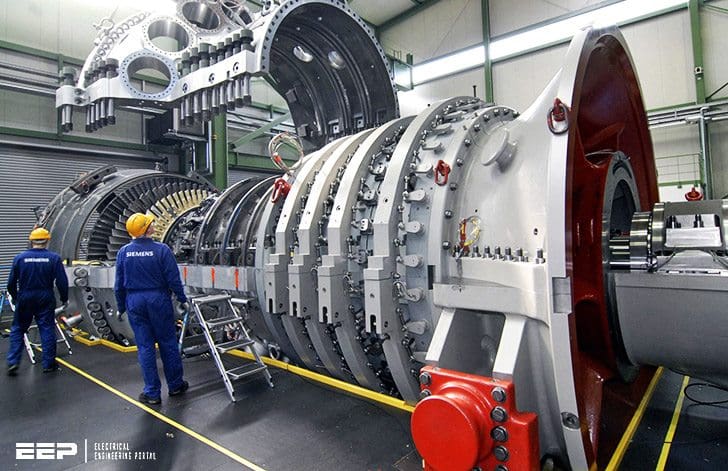
For example, the types of prime movers in use in the United States today are steam turbine, combustion turbine and reciprocating engines. Different fuels may be used for the various types of primer movers. The source of heat can be from the burning of coal, oil, gas or the heat given off in a nuclear reactor.
Let’s discuss the following power generating units:
- Steam Turbines
- Combustion (Gas) Turbines
- Hydro Turbines
- Pumped Storage
- Nuclear Units
- Reciprocating Engines
- Micro Turbines
- Wind turbines
- Solar units
1. Steam Turbines
In a steam turbine generating plant fossil fuels (coal, oil, gas) are burned in a furnace. (In a nuclear plant heat is produced as a result of a nuclear chain reaction.) The heat given off by this combustion is used to heat water in a boiler to such a temperature that steam is produced.
This steam (which may be as hot as 1,000 degrees F and at pressures as high as 3,600psi) is then passed through one or more turbines. Energy contained in the steam is extracted by allowing the steam to expand and cool as it passes through the turbine(s).
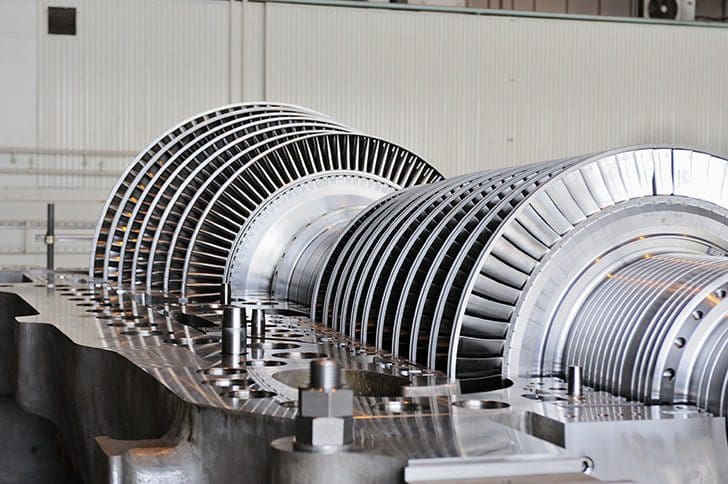

This energy turns the blades of the turbine, which are connected to a shaft. This shaft is connected to the electric generator and rotates the coils of the magnetic field of the generator, thus producing electricity. After passing through the turbine, the steam passes through a condenser, where it is cooled and becomes water for reintroduction to the boiler.
After leaving the turbine additional heat is extracted from the steam in feed water heaters, heating water going to the boiler. The steam is then condensed and fed back into the boiler.
Differences in the fuel used to produce heat will result in design and equipment differences for each generating station.
2. Combustion (Gas) Turbines
Combustion turbines are most often fueled by gas but can be fueled with some liquids. In a combustion turbine hot gasses (ignited fuel–air mixture) burn, are expanded through a turbine, driving a generator. An additional component of a combustion turbine is a compressor. This device increases the pressure of the air used in the combustion section by a factor of approximately 10.
This gas is then passed through a turbine, where it is cooled and expanded. The dissipated energy turns the turbine, which, in turn, runs an electrical generator. Gas turbines are not as efficient as steam plants, but are considerably lower in capital costs. For this reason they are often used as “peaking” plants to supply peak electricity needs.
There are several variations on this basic design, each attempting to make maximum use of the energy input to the system. In some cases the turbine exhaust gases are used to preheat air prior to combustion.
In other cases, the exhaust is used to heat steam in a boiler to operate in conjunction with a small steam turbine generator. This is known as a combined cycle plant. Combined cycle plants have excellent efficiency since a considerable amount of the energy in the gas turbine exhaust is recovered.
Gas-fired combined cycle generation plants are currently the units of choice in the United States.
However, I found interesting negative comment on this video by user C.W. If anybody has similar or oposite experience, feel free to share with me.
This unit creates an insane amount of noise pollution for the people who are unlucky enough to live on Roosevelt Island. There’s absolutely no protection from the noise the unit emits which is outrageous. It begins @ 6pm and goes for the next 12 hours, how on earth is that legal?? Why does this plant not have to abide by noise pollution policies every single other industry (including the airlines) must?
3. Hydro Turbines
Electric power is produced from water by directing a column of falling water past the “fins” of a hydraulic turbine. In a typical hydroelectric power plant, water is contained behind a dam. This dam causes the water level to rise. As a result, potential energy is stored in the water. To produce electricity, the water is made to flow through a turbine to a lower level.
The difference in elevations between the two water levels is called the “head”.
In hydroelectric generation, the amount of electric energy that a given column of water is capable of producing varies directly with the head.
In the most common configuration, the hydraulic turbines and electrical generators are located at the site of the dam.
However, it is not uncommon to have the turbines and generators located several miles downstream from the dam. Under this arrangement, water flows through a large pipe or “penstock” from the dam to the turbines.
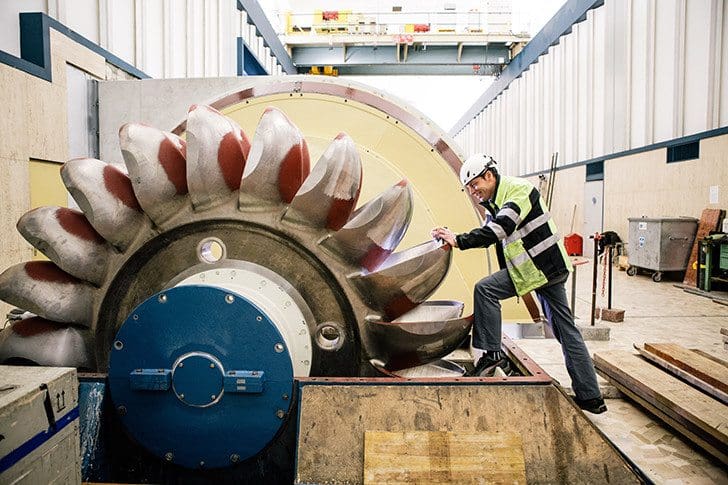

There are several types of hydroelectric plants in use today. In the simplest form, a stream or river is diverted to pass through a hydraulic turbine. However, daily and seasonal variations in stream flow will cause the output of the hydro project to change. To deal with this situation, storage ponds are built. A portion of the stream flow is diverted into the storage facility during normal or high-flow conditions.
Then, at low stream flow times, the water from the storage pond is released, thus maintaining the electric output of the project.
4. Pumped Storage
In still other configurations, water is stored in a lower reservoir and pumped to a higher elevation reservoir at night by using low-cost electrical energy produced by the utility’s thermal plants at off peak times.
During the peak load hours, the water is released from the upper reservoir and passed through a turbine or turbines, which drive electric generators.
They also perform a “relay” function. They receive low-cost energy produced at one time and place, hold it for a while, and then pass it on for use at another time in other places when alternate energy sources would be more expensive.
5. Nuclear Units
Nuclear units utilize a nuclear reaction as a source of heat for a conventional cycle. There are two primary designs used for nuclear reactors; boiling water reactors and pressurized water reactors. At the time of this writing, there are slightly more than 100 operating nuclear power units in the United States.
No new nuclear units have been installed in the United States for many years because of concern over capital costs and safety. As nuclear units age, some owners are requesting extensions of their operation licenses.
Other nuclear units are being retired.
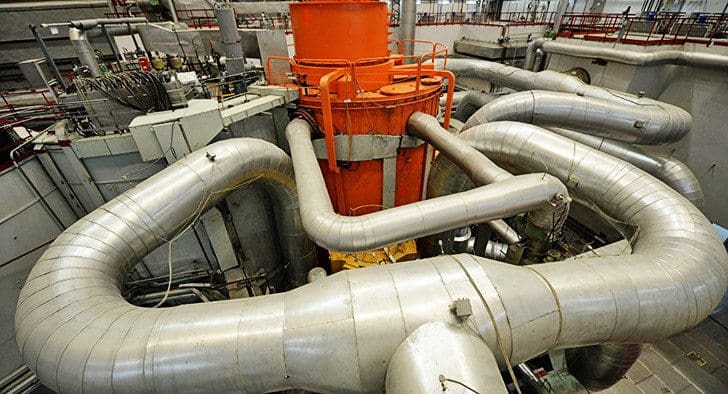

6. Reciprocating Engines
This type of generation usually consists of a large diesel engine which uses 2 diesel fuel as a source of energy. Electricity is produced by connecting the output shaft of the engine to an electrical generator.
Diesel engine improvements have resulted in considerable reductions in weight and improvement in efficiency.
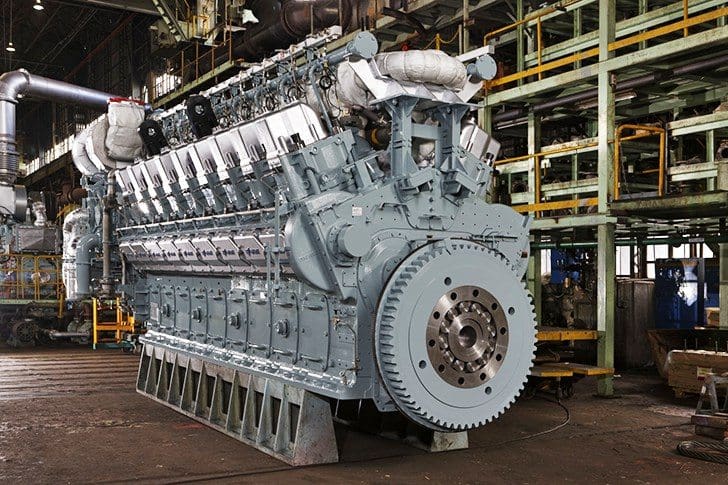

7. Micro Turbines
These are small turbines that can be located at or near the customers. They can be installed on the customer’s side of the meter or on the distribution or sub-transmission system, depending on their size.
They are usually fueled from the natural gas supply available.
8. Wind turbines
The interest in renewable energy sources has also spurred the development of improved methods for wind energy generating electricity. The wind is used to drive a turbine, which drives a generator.
The further development of power electronic controls will doubtlessly result in new configurations for wind power generating systems.
The effective generating capacity from wind power is considerably less than the capacity of the generators because there are periods when wind is not available.
9. Solar units
Producing power directly from solar energy is not currently a significant factor in electricity generation. However, this technology has attracted the attention of electric utilities and industry as an alternative for future energy production.
While the electricity is essentially free in that there are no fuel costs, photovoltaics have not been widely used, even in attractive climates due to the high initial investment required for the devices, their inability to produce power during periods of darkness, and the lack of knowledge about how long they will last.
They are economic, however, for applications where expensive extensions of wires is needed to provide normal electric service, for example, railroad crossings.
Both wind power and solar power may need to be complimented with energy storage of some type to increase their effectiveness in supplying electricity requirements of the system.
Reference // Understanding electric power systems by Jack Casazza and Frank Delea


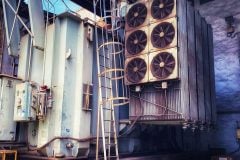




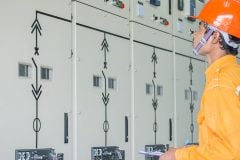

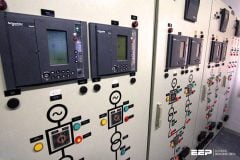

A comprehensive and knowledgeable information for those dealing in Power Generation. I am aerospace engineer.
Dear
I really enjoy this article but I found it hard to save it for future reference.
Please can I get this articles for documentation.
Realy best Knowledge feed sir!
thank you for this article,it is interesting. thank you.
This is the right blog for anybody who really wants to understand this topic.It’s actually a great and helpful piece of information. I am satisfied that you simply shared this helpful info with us. You can also use a Resume Example to help you get started in writing yours.
Excelente idea and good explanaition about improvement of the combined cycle for today and tomorow.
I would say the uptake in Solar has been quite rapid and significant over the last decade. Unfortunately there is still a way to go in utilising large areas of land with low population density. Also, there is solar thermal generation, where mirrors direct light to heat water to drive a steam turbine – still in its infancy but an interesting topic.